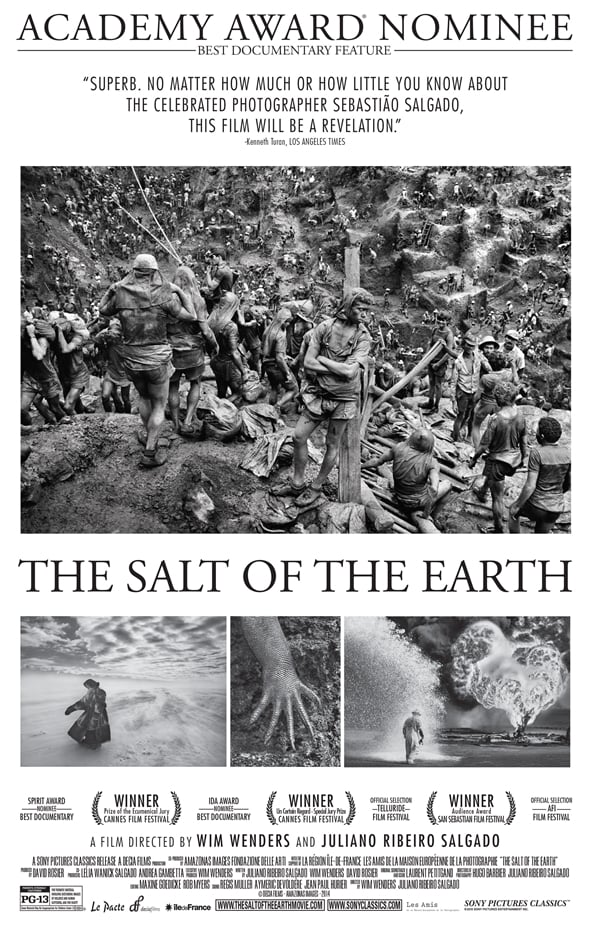Art World
Wim Wenders, Sebastião Salgado, and the Backstory of How ‘Salt of the Earth’ Was Made
Salgado and Wenders illuminate how artists can begin to heal the Earth.
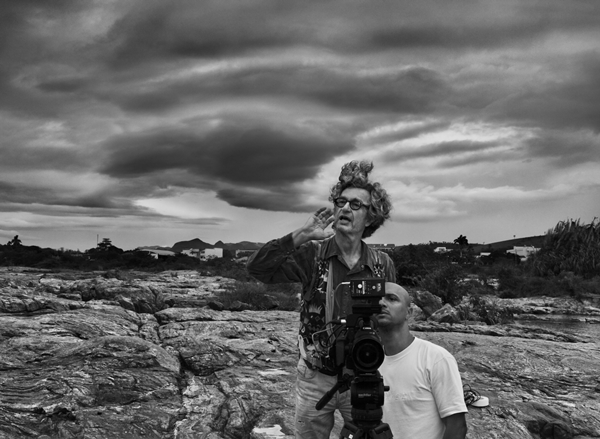
Salgado and Wenders illuminate how artists can begin to heal the Earth.

Jordan Riefe

Sebastião Salgado did not cut a clear path for himself from the get-go.
Following an itinerant childhood in Brazil, renowned photographer he earned a master’s degree in economics and went to work for the International Coffee Organization, travelling frequently throughout South America and Africa, where he often took photos. In 1973 he abandoned economics and become a photographer full-time, traveling to over 100 countries, often assigning himself to the world’s most destitute trouble spots.
In such folios as Workers, often depicting rough working conditions, Salgado hoped to contribute to the dialogue and in some way bring relief to the suffering. Expeditions to Rwanda and Bosnia documenting genocidal civil wars in the 1990s changed that. The grim scenes of dead babies, starvation, and carnage convinced him there was little anyone—least of all a man with a camera—could do about such barbarism, .
“That was the hardest moment I think in his life, realizing his photos didn’t have that function any more and that’s when he broke down and put his camera down and really lost his faith in his own work but also in humanity,” says Wim Wenders.
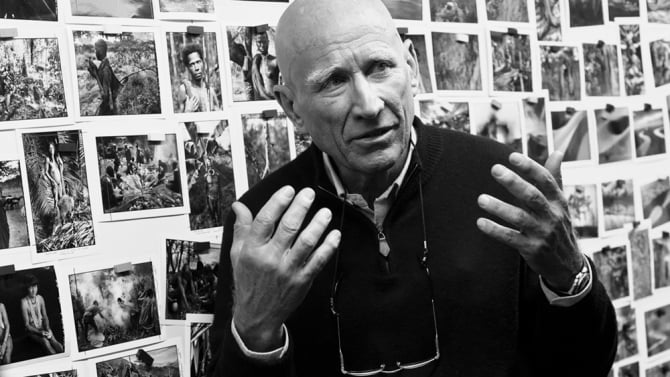
Sebastião Salgado in Wim Wenders and Juliano Ribeiro Salgado’s film The Salt of the Earth.
Wenders along with Salgado’s son Juliano Ribeiro Salgado, directed the Oscar-nominated Salt of the Earth, a film about the photographer which open in theaters tomorrow, March 27. (artnet News pondered the possibility of an award for the documentary—see Will Wim Wenders Documentary on Sebastião Salgado Win Big at the Oscars?)
A longtime fan of Salgado’s work, in 2009 Wenders decided to track him down and introduce himself. As the two became acquainted, Salgado introduced him to Juliano, a fledgling filmmaker at the time, and the three decided to make a movie together. After years of estrangement from his father, who regularly disappeared on expeditions for long periods at a time, Juliano never intended to make a movie about him until he was invited along on some of those expeditions, the footage of which is seen in the film.
Wenders and Juliano shot separately with the idea of combining their footage but soon realized they would be better off making two movies. “I lived with all the material for two months trying to put it together and show it to Wim,” Juliano recalls. “Wim, composed, well behaved, nice, starts shouting in the editing room, hates it.” From that point on the pair finally began working together. What emerged was a portrait of a gifted and determined artist who consistently put himself in harm’s way to shed poetic light on scenes of strife and anguish.
When Juliano was seven years old, his father returned from a trip to impoverished northeast Brazil that proved to be pivotal. “I remember seeing those pictures of the dead children with their open eyes and having Sebastião tell me the stories,” he recollects. “You got the feeling that the world was a difficult place but you could act on it and try bringing those stories out and maybe set a spark in the audience’s mind. By doing that, you could start changing things around, and there was a purpose to those travels.”
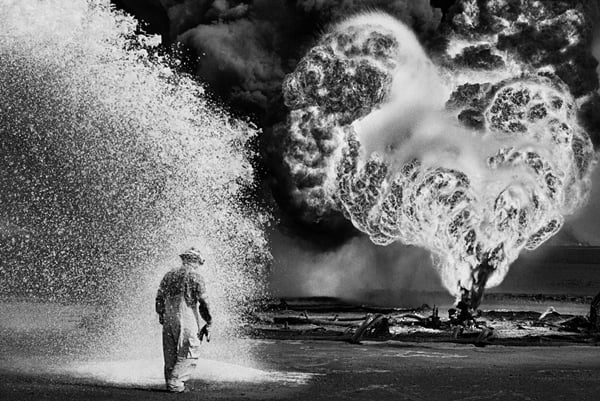
Photo: Sebastião Salgado © Sebastião SALGADO / Amazonas images, courtesy of Amazonas Images/Sony Pictures Classics.
A sagacious looking 72-year-old, Salgado is interviewed by Wenders in the movie and appears on expeditions when he was younger, a tall blond man standing out in the crowd. Some of the later expeditions with Juliano are included, as well as home footage shot on the family cattle farm in Minas Gerais, Brazil, with Salgado’s wife Lélia.
Sometimes proving to be a cagey subject during filming, Salgado often interrupted interviews to snap photos of Wenders.
As the filmmaker came to understand his subject’s working methods, what struck him most was the amount of time Salgado invested in his work. “Other photographers came and went but he stayed and went back and spent months with these people and lived in their situation and ate the same food,” notes Wenders. “It slowly dawned on me it was like assimilating to his own working methods and realizing only time can give you access to someone like this. We then took three and a half years.”
Shaken by his wartime expeditions to Rwanda and Bosnia, Salgado concludes in the film, “We humans are terrible creatures,” and returns to the family farm. There, as if to confirm his conclusion, he notes the surrounding hills have all turned brown due to manmade environmental changes. Working with Lélia, he recruited partners, raised funds, and planted 17,000 acres of pristine forest, establishing the Instituto Terra dedicated to sustainable development in the area.
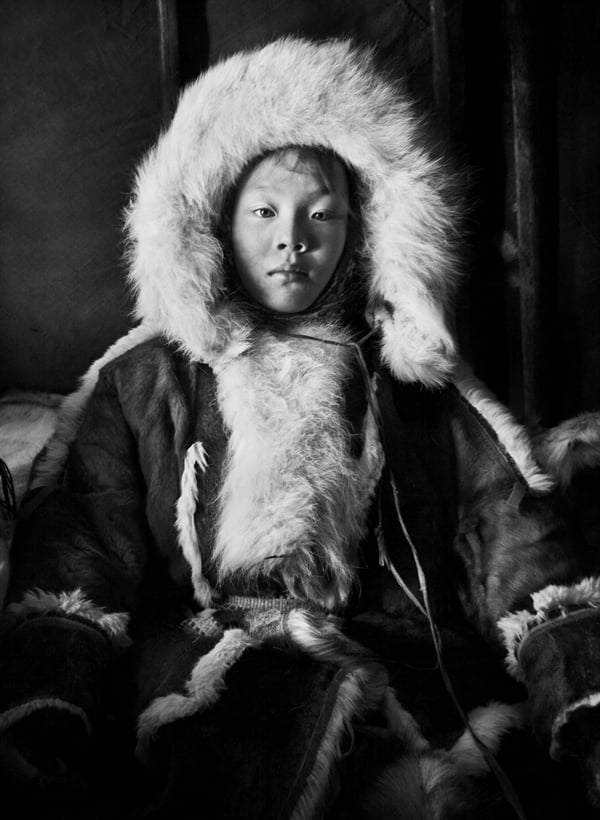
Photo: Sebastião Salgado © Sebastião SALGADO / Amazonas images, courtesy of Amazonas Images/Sony Pictures Classics.
This process of rebirth manifests itself in Salgado’s last folio, Genesis, depicting stunning landscapes, animals, and indigenous peoples. “The great realization that I had making this film was the realization that the man was cured from this terrible depression that happened in his life,” observes Wenders. “It was not only his wife and family that cured him but in the same way nature itself that reestablished his heart.”
Follow artnet News on Facebook and @Jriefe on Twitter. Sebastião Salgado is represented by Yancey Richardson Gallery in New York and Peter Fetterman Gallery in Santa Monica, California. On April 2, Phillips New York will be holding a day sale that will include some of Salgado’s work; find out more about the sale here.
